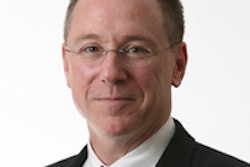
On-call radiologists are constantly interrupted by phone calls and other requests, to such a degree that these interruptions could be distracting them from their primary job of interpreting images, according to a study published online in the Journal of the American College of Radiology.
Researchers at the University of California, San Francisco (UCSF) explored how on-call radiologists are affected by analyzing the absolute time and frequency of phone interruptions during their shifts. Because on-call radiologists handle everything from setting exam protocols and injecting contrast to ultrasound scans, clinical consultations, and communicating results to referring physicians, responsibilities other than interpreting images now take a predominant role in their workflow, the authors noted.
 Dr. John-Paul Yu, PhD, from UCSF.
Dr. John-Paul Yu, PhD, from UCSF.
"The workflow of the on-call radiologist, in particular, is especially vulnerable to disruption by telephone calls and other modes of physician-to-physician communication," wrote lead author Dr. John-Paul Yu, PhD, and colleagues. "[And] radiologists, especially radiology residents at academic institutions, experience frequent disruptions while on call" (JACR, April 26, 2014).
Yu's group used data from UCSF's telecommunications center, compiling a list of all completed telephone encounters (both incoming and outgoing) that occurred over a period of 13 weeks between July and October 2012. Calls that occurred between 8 a.m. and 5 p.m. were not included because the hospital does not schedule on-call radiologists during this time. The researchers also catalogued the total number of CT exams performed and interpreted by on-call radiologists during the time period.
Yu and colleagues obtained the following results:
- A total of 10,378 calls were completed during on-call hours, more than half of which (5,759, or 55%) were incoming calls.
- The median call duration was 57 seconds.
- During a typical 12-hour on-call shift, there was an average of 72 phone calls and an average total time spent on the phone of nearly two hours (108 minutes).
- The median interval from the start of one telephone call to the next ranged from three to 10 minutes, depending on the time of day.
- There was an average of 19 CT studies during an overnight shift.
In addition, the average telephone call volume per hour ranged from three calls to 11 calls, and average CT volume ranged from one to three studies per hour. Hourly average CT and telephone call volumes correlated, the group wrote.
The percentage of each hour spent on the phone ranged from 5% to 25%, and the probability of being interrupted at least once while reading a study increased with the length of time required to read the study, according to Yu and colleagues.
Ringing off the hook
"Taking call at UCSF, I got to the point where I wondered, 'Why is the phone ringing all the time?' " Yu told AuntMinnie.com. "The results of our study surprised us in how many phone interruptions there actually were. I don't think we realized how busy call can get, just with talking to other physicians."
The on-call environment has changed dramatically over the past decade, as radiologists have taken on more responsibilities, the authors wrote. Although communicating with referring physicians is one of the most important aspects of radiologists' work, it's also the most disruptive. If the average time to interpret an abdominopelvic CT exam ranges from eight to 10 minutes, during peak call hours the on-call radiologist could expect to be interrupted an average of 2.5 times while attempting to render an initial interpretation, according to Yu and colleagues.
"Compounding this scenario is that this represents just the probability of being disrupted by a phone call and does not account for other potential disruptions to the work environment, including clinical consults, pages, sonographers, and other staff members," they wrote. "The implications of this are far-reaching; not only does it suggest a marked loss of workplace efficiencies ... but it also raises a patient safety issue."
Yu's department took particular measures to try to reduce the disruptions: They used a newly installed electronic medical record (EMR) system to make preliminary reports for all on-call studies available electronically to referring physicians. They also established a second in-house radiology call room adjacent to the emergency department, which the on-call radiologist staffs when patient levels are high. The department has also placed medical students in the primary radiology call reading room to triage telephone requests.
Interruptions have decreased since these measures were taken, according to anecdotal accounts from radiology staff, but there are not enough data yet to make a definitive determination, Yu and colleagues wrote. UCSF plans to continue monitoring these changes.
"Yes, radiologists need to be conscientious about communicating with referring physicians," Yu told AuntMinnie.com. "But our first job is to provide high-quality diagnostic interpretation. It really doesn't matter how many physicians we talk to if our readings aren't accurate."




















